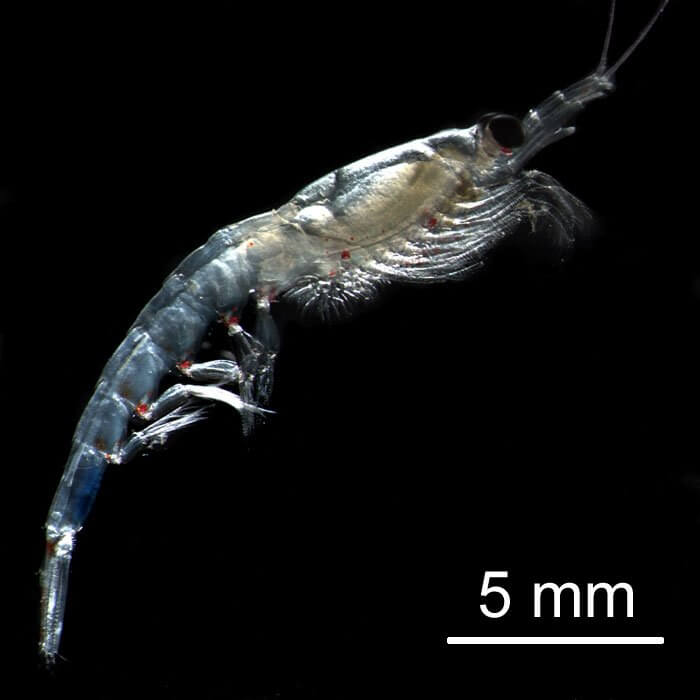For researchers, studying the giants of the seas is no easy task! For example, how do they quantify how much a blue whale consumes? To quantify the volume that can fit in a whale’s mouth, all while the animal is in motion in the open sea, seems like a totally impossible mission… and we can assure you, no researcher wants to be voluntarily swallowed by a whale for the sake of science! However, knowing the amount of food ingested by a whale is essential to better understand its dietary requirements. So, how do they do it?
Appetite of a giant
To capture its prey, the blue whale has a very special technique: it spots a school of krill and dives into it with its mouth wide open, engulfing an impressive quantity of water and mixed prey in its oral cavity. The animal then spits out the water through the filter of its baleen such that only the krill remains. The whale can then enjoy its meal!
By observing this type of behaviour, scientists have developed mathematical models. To calculate the quantity of food swallowed, one must first evaluate the volume of krill-laden water that a whale can engulf in a bite, and then determine the quantity of krill contained in each cubic metre (m3) of water.
A hyper-elastic mouth
In order to measure the volume available in a blue whale’s mouth, researchers looked at a number of elements, such as skull and mandible measurements as well as tissue properties in the mouth and ventral grooves. The anatomy of a blue whale is quite particular: the lower mandible of its jaw can dislocate to open to almost 90°, and the floor of its accordion-like mouth can stretch up to quadruple its normal size.
Thanks to recovered skeletons and carcasses, combined with knowledge of how fast whales swim during their dives, researchers have modelled that a 25 m blue whale could swallow up to 80,000 litres in a single gulp (humans average just 0.07 litres!).
360 kg of krill in a single bite!
In parallel, to determine the density of prey in the water, researchers often use an echo sounder. This device, which sends acoustic signals into the water, detects the presence of krill and small fish, which reflect the waves back to the sounder. With this tool, researchers have concluded that the amount of organisms present per litre of water varied widely. In the St. Lawrence Estuary, a swarm of krill contains on average 20 to 100 g of krill/m3of water. However, in some particularly rich waters of the world, using a net to measure concentrations, densities can sometimes reach 4.5 kg/m3!
If we take the example of our 25 m blue whale, one can simply multiply the volume of engulfed water (80 m3) by the prey density to obtain the quantity of krill ingested. In instances of very high krill density (4.5 kg/m3), each bite provides the whale with approximately 360 kg of krill, the weight of a small horse! However, in the St. Lawrence, with an average krill density of 0.05 kg/m3, a single bite will provide around 5 kg of food.
Waters rich enough to feed a whale?
But why do researchers go to such lengths to perform this calculation? Answer: to verify that blue whales are eating their fill. Below a certain density of krill, whales will not get enough food to compensate for the energy they spend diving and engulfing their prey. Studying the diet of our giants of the seas as well as measuring and monitoring prey density are therefore major challenges for the future of cetaceans.






